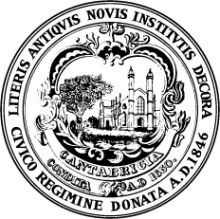Cambridge City Manager is Case Study of Willful Muni Broadband Ignorance
I have been tracking from afar local grassroots efforts in Cambridge, Massachusetts, to start a municipal broadband network for years. I've visited them locally and spoken to various people from citizens to elected officials about the different options. The following are my observations. I'm not trying to channel their thoughts on how to move forward.
Cambridge is a high-tech city with nearly ubiquitous coverage from Comcast, delivering more or less the same services they offer to millions of homes — which is too say mostly reliable and high-cost Internet access (that will be still higher cost next year and the next after that). In the case of Comcast, it comes with crippled upload speeds compared to fast download capacity. Customer service is . . . well, you do your best to never have to use it.
But with MIT and Harvard within its confines, many in Cambridge are well aware that Internet access can get so much better and not be mediated by a company willing to spend millions in D.C. to preserve its right to set up tollbooths for certain kinds of content if they so choose.
However, Cambridge is remarkably similar to Palo Alto, which is also home to high tech households that mostly use Comcast cable and sometimes have the option of AT&T fiber. And in both instances, there is a strong case for some kind of municipal network that would create more local Internet choice. Both appear to have significant support in the community for a public option. But both also have city staff that have decided to prevent any meaningful investment.
They have run into the challenge that Seattle also wrestled with. These high profile cities have refused to consider creative, incremental, and targeted efforts. Instead, they have focused almost entirely on the costs of duplicating Chattanooga or Wilson, where the community built the entire citywide at once with debt-financed capital.
In Cambridge, the city council is rebelling after having been stymied by a city manager that has successful resisted efforts to study municipal broadband for years.



